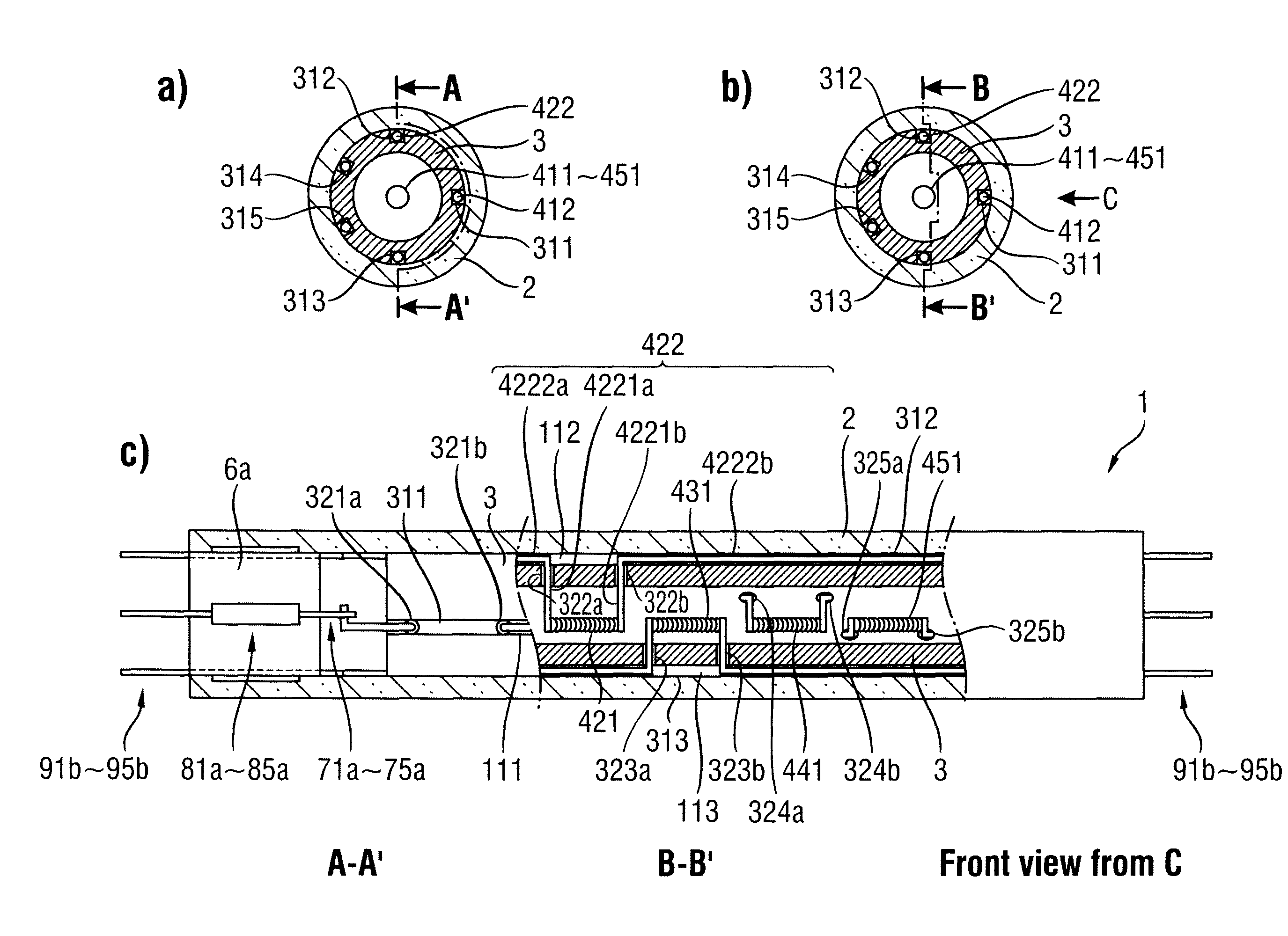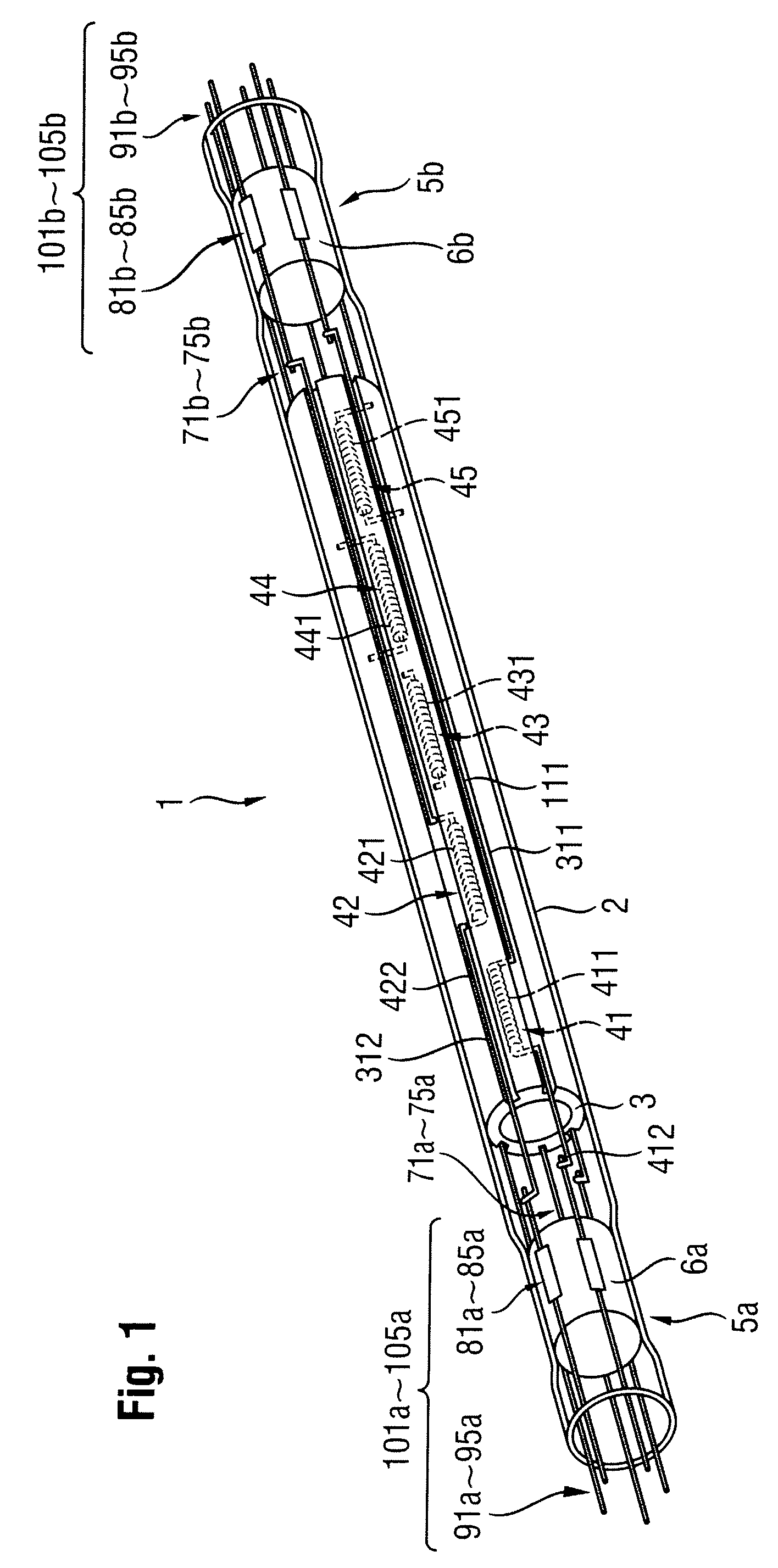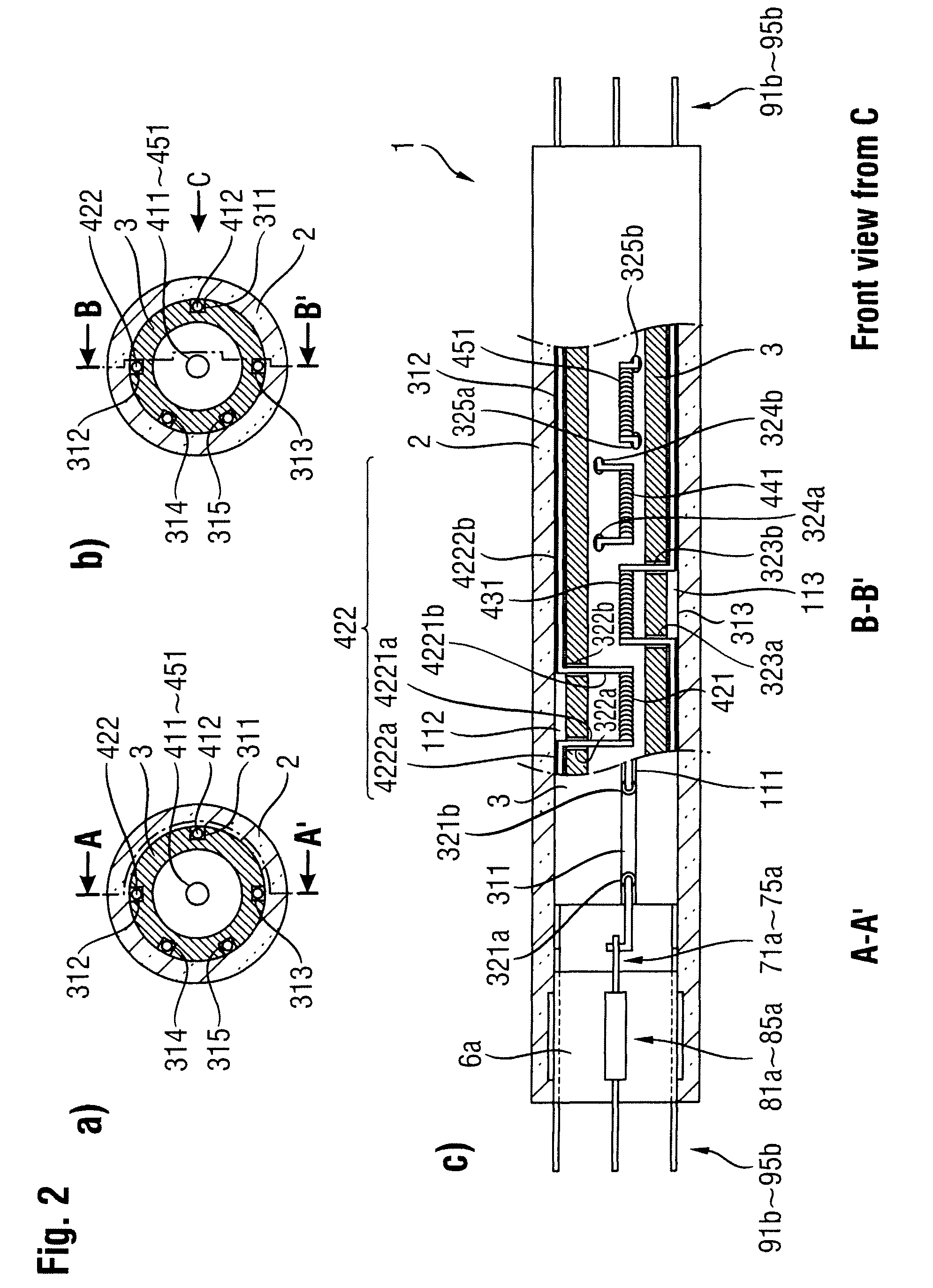Filament lamp and light-irradiation-type heat treatment device
a technology of heat treatment device and filament lamp, which is applied in the direction of gas-filled discharge tube, transit-time tube, electrical heating fuel, etc., can solve the problems of affecting the temperature of semiconductor wafer, and affecting the quality of semiconductor wafers
- Summary
- Abstract
- Description
- Claims
- Application Information
AI Technical Summary
Benefits of technology
Problems solved by technology
Method used
Image
Examples
first embodiment
this invention is explained using FIGS. 1 through 6. FIG. 1 is a perspective view showing the constitution of the filament lamp 1 involved in the invention of this embodiment. As shown in FIG. 1, the filament lamp 1 has a linear or other tubular light emitting tube 3, made of quartz glass or another light-transparent material. Air-tight seal areas 5a, 5b are formed by fusing sealing insulators 6a, 6b on the light emitting tube 2 at both ends of the light emitting tube 2. A tubular insulating wall / inner tube 3, made of quartz glass or another light-transparent material and shorter in length in the direction of the tube axis of the light emitting tube 2, is located on the same axis as the light emitting tube 2 in proximity to the inner surface of the light emitting tube 2 within the light emitting tube 2, in which is sealed a halogen gas. For example, five filament assemblies 41 to 45 are located within this inner tube, and filaments 411 to 451 of the filament assemblies 41 to 45 are ...
second embodiment
this invention is explained using FIGS. 7(a)-7(c), which are front cross-sectional views showing the filament lamp 1 of the invention of this embodiment, sectioned across and along the tube axis. FIGS. 7(a) &7(b) are cross sections of the filament lamp 1 cut in the radial direction. FIG. 7(c) has a cross section of the filament lamp 1 cut along the direction of the tube axis at line A-A′ in FIG. 7(a), a cross section of the filament lamp 1 cut along the direction of the tube axis at line B-B′ in FIG. 7(b), and a front view of the filament lamp 1 as seen from C in FIG. 7(b).
As shown in FIGS. 7(a)-7(c), the filament lamp 1 of the invention of this embodiment is not limited to the mode of lead accommodation spaces 111 to 115 formed by multiple slots 311 to 315 in the inner tube 3 and the inner surface of the light emitting tube 2, like the filament lamp 1 of the invention of the first embodiment. In this filament lamp 1, multiple slots 131 to 135 are formed in the inner surface of the ...
third embodiment
this invention is explained using 8(a)-8(c), which are front cross-sectional views showing the filament lamp 1 of the invention of this embodiment, sectioned across and along the tube axis. FIGS. 8(a) &8(b) are cross sections of the filament lamp 1 cut in the radial direction. FIG. 8(c) has a cross section of the filament lamp 1 cut along the direction of the tube axis at line A-A′ in FIG. 8(a), a cross section of the filament lamp 1 cut along the direction of the tube axis at line B-B′ in FIG. 8(b), and a front view of the filament lamp 1 as seen from C in FIG. 8(b).
As shown in FIGS. 8(a)-8(c), in the filament lamp 1, multiple slots 131 to 135 are formed in the inner surface of the light emitting tube 13, extending along the tube axis and separated from each other in the circumferential direction. By placing an inner tube 15 close to the inner surface of this light emitting tube 13, one forms multiple lead accommodation spaces 111 to 115 demarcated by the slots 131 to 135 of the li...
PUM
 Login to View More
Login to View More Abstract
Description
Claims
Application Information
 Login to View More
Login to View More - R&D
- Intellectual Property
- Life Sciences
- Materials
- Tech Scout
- Unparalleled Data Quality
- Higher Quality Content
- 60% Fewer Hallucinations
Browse by: Latest US Patents, China's latest patents, Technical Efficacy Thesaurus, Application Domain, Technology Topic, Popular Technical Reports.
© 2025 PatSnap. All rights reserved.Legal|Privacy policy|Modern Slavery Act Transparency Statement|Sitemap|About US| Contact US: help@patsnap.com



